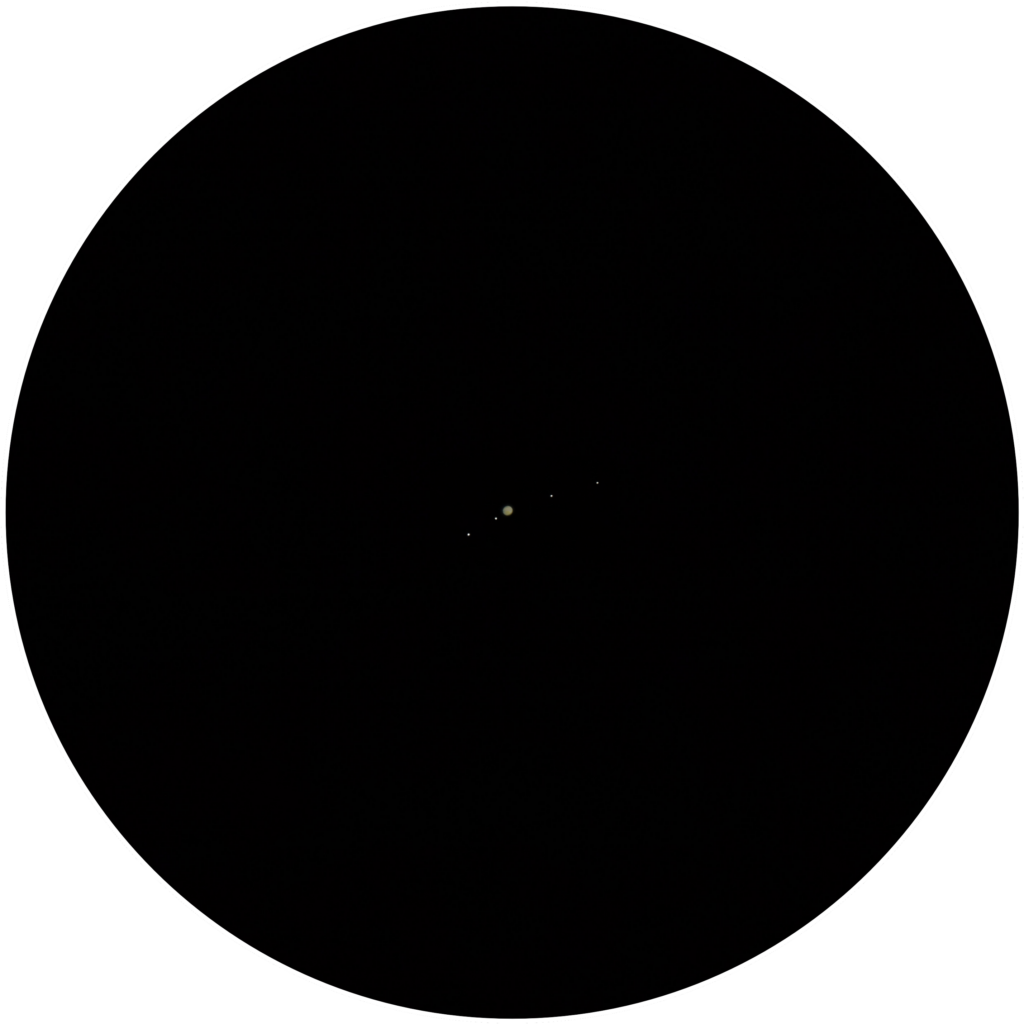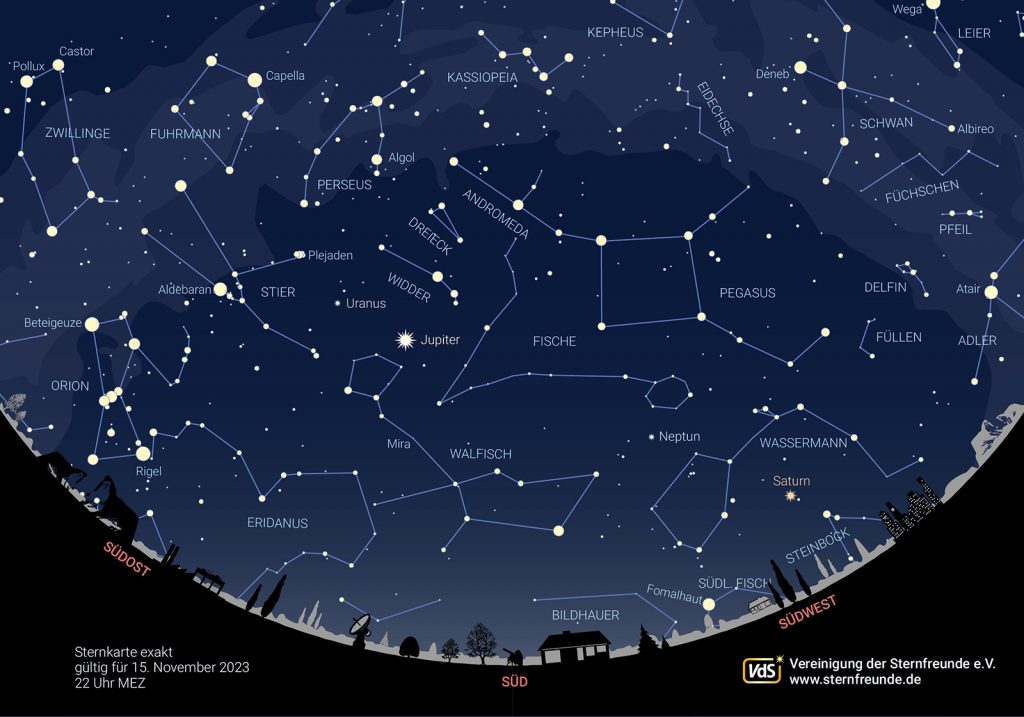The starry sky in November 2023
The decreasing length of the day allows us to open the observatory from 7 p.m. on Fridays, weather permitting, from November until the end of February. Special events this month include Venus occultation and the Opposition of the Jupiter.
SUN AND MOON
In the morning hours of November 9, the waning moon covers Venus. The event can already be observed with binoculars. Entry on the illuminated side takes place in Zweibrücken at 10:55 am, exit on the unlit side at 12:03 pm. It is essential to ensure that the telescope or binoculars are not inadvertently pointed at the sun, which is around 45 degrees away!
Due to the time change on the last Sunday of the previous month, sunrises and sunsets are earlier. At the beginning of the month, our central star rises above the horizon at 7:15 am, at the end of the month at 7:59 am. The sunsets shift from 17:13 to 16:39. The full moon clouds the view of fainter celestial objects at the beginning and end of the month.

PLANETS
Mercury cannot be seen in the evening sky at the end of November despite its large angular distance of 21 degrees from the Sun. This is due to its extremely southern position in the zodiac.
Venus continues to dominate the morning sky. Although their rises are delayed by around an hour, this is partly compensated for by the sun rising later and later. The occultation of Venus by the moon in the morning hours of November 9 has already been mentioned above.
The red planet Mars is in conjunction with the Sun on 18.11., i.e. behind the Sun from our point of view. It is still not observable.
On 3.11. Jupiter in opposition to the Sun. The Sun, Earth and Jupiter roughly form a line. The distance to Earth on this day is approx. 3.98275 astronomical units, which corresponds to approximately 585,810,368 million kilometers. It can be observed as a shining celestial object throughout the night. The dance of Jupiter's four large moons Io, Europa, Ganymede and Callisto around the planet can be observed with binoculars within just a few hours. The innermost moon Io requires 1 day and 18.5 hours for a complete orbit, while the outer moon Callisto takes just under 18 days. We recommend using a tripod or a firm base to rest your telescope on. The distinctive cloud stripes are already visible in smaller telescopes. Click on each image to enlarge.
The brightness and apparent diameter of the Saturn in the sky continue to decrease, it shifts its sunsets to the time before midnight and thus becomes a not particularly interesting object.
Uranus and Neptune are already visible in small telescopes. Free astronomy programs are a good help in finding them.
STARRY SKY
On eastern horizon the twins can already be seen just above the horizon. Likewise, towards the middle of the month, the sky chaser Orion follows the Pleiades, which are located east of the zenith. The distance to the open star cluster is about 444 light years. According to one of the many Greek legends, the Pleiades were the seven daughters of the Titan Atlas, who carries the celestial vault, and Pleione, daughter of Okeanos. Touched by the beauty of the seven sisters, Orion approached them, but the Pleiades were frightened and fled. Since then, Orion has been hurrying after them in the sky but has never been able to reach them. The Pleiades can be seen with the naked eye and is a beautiful sight in binoculars.
About us The constellations Perseus, Andromeda and Pegasus, which were already mentioned in the previous month, are still in the sky.
A little Direction south is the zodiacal constellation of Pisces. This constellation contains the vernal equinox, where the sun is at the equinox at the end of March.
In the West you can still find the last signs of the summer constellations.
The big bear continues to stay in low-lying areas of the northern sky on.
The following graphic shows the view of the sky on November 15 at 10 pm.




